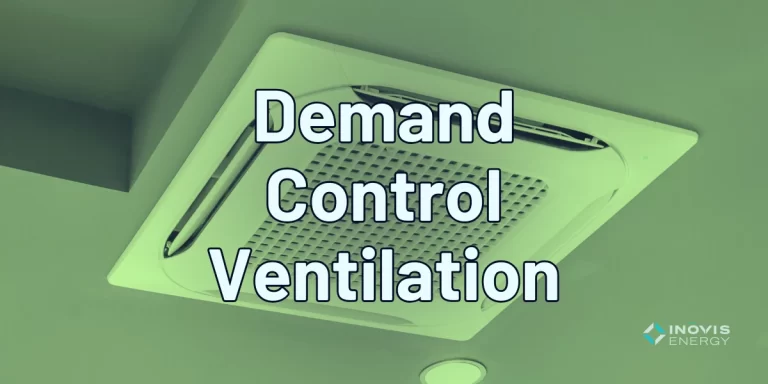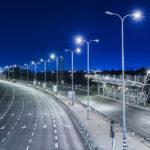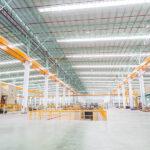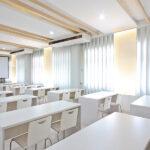Demand Control Ventilation (DCV)
Home » Solutions » HVAC Upgrades » Demand Control Ventilation (DCV)
Demand Control Ventilation (DCV) is a smart HVAC strategy that adjusts fresh air intake based on real-time occupancy or air quality. By delivering ventilation only when and where it’s needed, DCV reduces energy waste while maintaining indoor air quality.
Table of Contents

What Is Demand Control Ventilation?
Demand Control Ventilation (DCV) is a building control strategy that automatically modulates the amount of outdoor air brought into a space based on measured conditions—typically carbon dioxide (CO₂) levels, occupancy sensors, or air quality data.
Traditional systems often ventilate based on maximum assumed occupancy, which leads to unnecessary energy use. DCV improves efficiency by adjusting ventilation in real time, especially in spaces with fluctuating occupancy like conference rooms, gyms, classrooms, or open offices.
DCV can be applied to:
-
Rooftop units (RTUs)
-
Air handling units (AHUs)
-
Dedicated Outdoor Air Systems (DOAS)
-
VAV terminal boxes and zone-level ventilation systems
It’s a scalable strategy for both small buildings and complex campuses seeking to improve HVAC performance and reduce costs.
Benefits of Demand Control Ventilation
In addition to ensuring optimal indoor air quality, DCV systems offer numerous benefits.
-
Significant HVAC Energy Savings – Reduces unnecessary ventilation
-
Maintains Healthy IAQ – Meets code requirements while avoiding over-ventilation
-
Improved Occupant Comfort – Matches ventilation to real-time occupancy levels
-
Supports LEED & ESG Goals – Enhances sustainability reporting and green building certification
-
Automation & Insights – Integrates with BAS or standalone controls
-
Ideal for Variable Occupancy Spaces – Great fit for schools, offices, gyms, and auditoriums
-
Rebate Eligibility – Recognized by utility programs as a qualifying ECM
How Demand Control Ventilation Works
Understanding how DCV works is the first step in realizing its potential benefits. The system uses CO2 sensors placed strategically throughout a facility. These sensors continually measure the level of CO2 – a reliable indicator of occupancy. As occupancy increases, CO2 levels rise, triggering the ventilation system to increase fresh air supply. Conversely, when occupancy decreases, so does ventilation, resulting in significant energy savings.
Summary:
-
Sensors (typically CO₂, VOC, or occupancy) monitor conditions within the space.
-
Controllers modulate dampers or fan speeds to vary the amount of outdoor air.
-
The HVAC system dynamically adjusts ventilation rates to meet demand — increasing fresh air during occupied periods and reducing it when unoccupied.
-
ASHRAE 62.1 compliance is maintained by ensuring minimum ventilation is still provided at all times.
Modern DCV systems often integrate with building automation systems (BAS) for remote monitoring, scheduling, and analytics.
How DCV Saves Energy
DCV reduces energy use by minimizing over-ventilation and optimizing system operation:
-
Less Heating & Cooling of Outside Air – Air is conditioned only as needed
-
Reduced Fan Energy – Lower ventilation volume reduces fan power requirements
-
Smaller Equipment Loads – Systems cycle less frequently and can be right-sized
-
Peak Load Reduction – Adjusts ventilation during high-cost periods or demand response events
-
Efficient Night & Weekend Operation – Automatically reduces ventilation during low-occupancy times
Savings range from 10–30% depending on building type, climate, and baseline system design.
Industries That Benefit from DCV
Related Facilities
Whether you operate an office building, school, shopping center, or manufacturing facility, DCV systems can make a difference. Check out our related facilities to see where DCV can be implemented.
-
Spaces with fluctuating or variable occupancy
-
Buildings with constant ventilation strategies that run 24/7
-
Schools aiming to balance IAQ with energy savings
-
Offices looking to automate after-hours ventilation
-
Properties pursuing HVAC decarbonization or electrification
- Underground Parking Garages
Installation Process
-
Assessment & Baseline Measurement – Analyze existing ventilation design and occupancy patterns
-
Sensor Selection & Placement – Choose CO₂, VOC, or occupancy sensors by zone type
-
Control Strategy Design – Configure system to adjust air volume based on real-time feedback
-
Integration – Connect DCV logic to existing RTUs, AHUs, or BAS
-
Testing & Commissioning – Ensure ventilation rates meet code and adjust for zone-specific behavior
-
Monitoring – Optional analytics dashboards or alerts for air quality or system faults
Financing Options
Investing in a DCV system can provide significant long-term savings, and various financing options are available to offset initial costs. These include energy efficiency grants, incentives from utility companies, and tax breaks for energy-saving improvements. We can assist in identifying and applying for these options, ensuring you maximize your return on investment.
Reduce Ventilation Waste Without Sacrificing Air Quality
Ready to breathe easy with Demand Control Ventilation? Demand Control Ventilation can cut your building’s HVAC energy use while keeping indoor air safe and compliant. Inovis can help assess your facility and design a smart ventilation control strategy.











